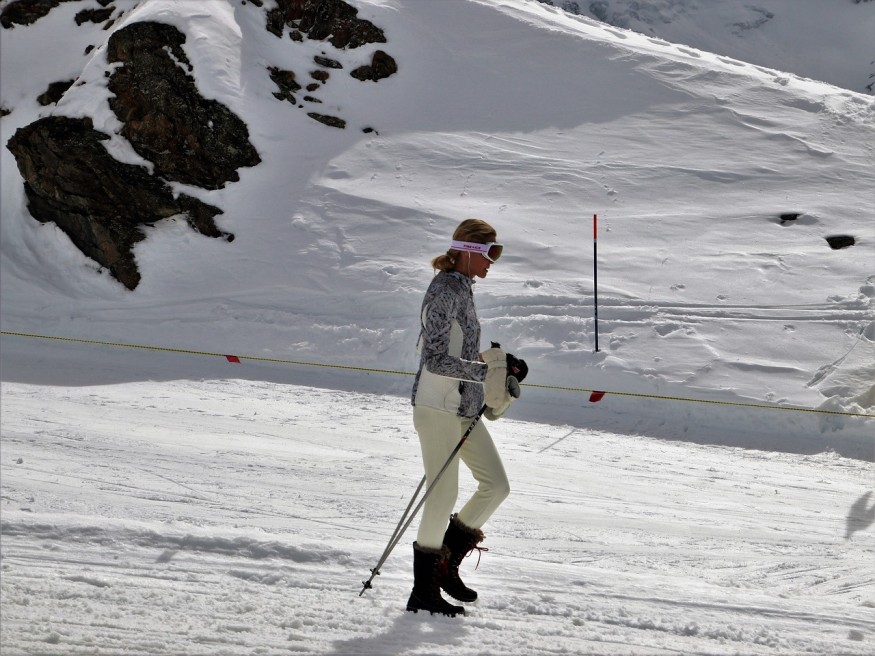A new study recently suggested that exercising in colder weather could burn off more fat than normal - at least in shorter bursts of more strenuous exercises.
In an investigation of 11 "moderately fit, overweight" adult volunteer participants, lipid oxidation, the technical term for burning fat, increased by more than thrice during exercise in a colder place of zero degrees Celsius, compared with the so-called "thermoneutral" environment of roughly 21 degrees Celsius.
Volunteers were taken through a series of regular workouts for HIIE or high-intensity interval exercise, also known as HIIT or high-intensity interval training, at each temperature: 10 one-minute cycling sprints at 90-percent percent, followed by a-minute-and-a-half recovery periods of cycling and 30-percent effort, that comes along with a "cool-down period" towards the conclusion of both sessions.

Impacts of Cold Temperatures
In their paper, researchers from the Laurentian University in Canada wrote, "This is the first known study" to examine the impacts of "cold ambient temperatures on acute metabolism" during high-intensity interval workout and postprandial metabolism the following day.
The study investigators added, they observed that high-intensity interval exercise done in a cold environment does change acute metabolism "compared to a thermoneutral environment."
Nevertheless, the addition of a cold inducement was less advantageous for postprandial metabolic reactions the next day.
The body becomes active, and it is more effective in processing nutrients and regular lipid or fat levels in the blood.
To check the impact on the investigation's adult volunteers, the study authors gauged "skin temperature, core body temperature, heart rate, and the amount of oxygen delivered to the quadriceps muscles."
'Lipid Oxidation'
The next morning, following a high-fat breakfast, plod specimens were collected to check on the participants' levels of insulin, sugar, and triglyceride, find out rates of lipid oxidation again and find out if the benefits of the previous night had continued.
While exercising in cold temperature increased lipid oxidation by more than 350 percent instantaneously afterward, there was no considerable difference after breakfast in the morning, which is the "postprandial period."
Certainly, glycemic reaction, the change in blood glucose levels in the body after eating, was more effective after a workout in the thermoneutral environment, as far as after-breakfast records were concerned.
The study authors concluded that while acute advantages appear to be present during acute HIIE in the cold, "postprandial metabolic responses are less beneficial" when HIIE exercise is executed with exposure to an acute cold environment.

Effective at Burning Off Fat
With very few volunteers and only a couple of HIIE sessions, it is quite early to pull sweeping conclusions from the research. However, it is an interesting starting point for looking at how ambient temperature might impact fat burning while doing bursts of intensive exercise.
Previous research showed that HIIE is quite effective at burning off fat, a part of its appeal. There is an established connection, too, between the body's metabolism following an exercise and the extent of hotness or coldness of an environment.
This new research incorporates those two fields of study to examine for further associations. The researchers said they know that exercise is essential in staying well and lowering the risk of diabetes, liver disease, heart ailment, and other health concerns.
Therefore, the more they know about what makes for effective, advantageous exercise and what does not, the better. This study has come out in the Journal of Applied Physiology.
READ NEXT : It May Feel Uncomfortable, But Wearing Mask During Exercise Should Not Damage Oxygen Intake
Check out more news and information on Exercise on Science Times.
© 2025 ScienceTimes.com All rights reserved. Do not reproduce without permission. The window to the world of Science Times.











